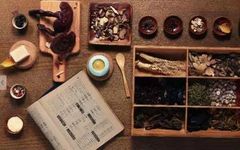
This is the 2073rd article from Da Yi Xiao Hu.

Gao Fang, also known as medicinal paste, is generally composed of around 20 types of Chinese herbs and has excellent nourishing effects. According to TCM theory, winter is the best season for supplementation throughout the year, and during winter, Gao Fang is considered the optimal choice for nourishment.
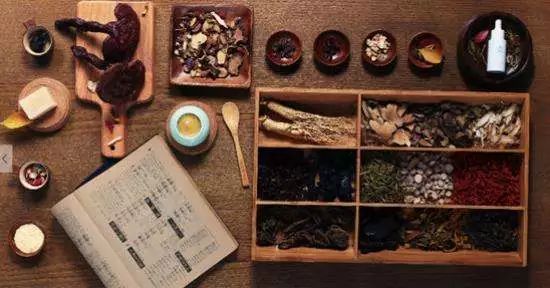
1. Functions of Gao Fang
1. Balancing Yin and Yang
This means that the occurrence and development of diseases are influenced by various pathogenic factors, leading to an imbalance of Yin and Yang, resulting in a pathological state. The main principle of formulating Gao Fang is to correct the imbalance of Yin and Yang in the body using the properties of the herbs.
2. Harmonizing Qi and Blood
TCM believes that Qi and Blood are the main material basis of Yin and Yang, and also the fundamental material basis of life activities in the human body. Gao Fang is used to regulate Qi and Blood, ensuring smooth and abundant circulation, enhancing vitality, and achieving health and longevity.
3. Supporting the Right Qi and Expelling Pathogenic Factors
Gao Fang can tonify Qi and nourish Blood, improve the body’s immunity, support the internal “Right Qi”, improve the internal environment, and reduce the occurrence and development of diseases. However, Gao Fang is not merely a tonic; it also has therapeutic implications, requiring differentiation and treatment based on symptoms while considering the expulsion of pathogenic factors.
4. Nourishing the Five Organs
The human body is an organic whole; when one organ is affected, it can impact the functions of other organs, potentially leading to simultaneous dysfunction. Gao Fang, being a complex formula, can not only tonify a specific organ but also comprehensively regulate the relationships among the organs, gradually moving towards balance and coordination, ultimately achieving the goal of curing diseases.
2. Can I directly take Gao Fang if I have dampness despite being physically weak?
Winter supplementation is one of the traditional health preservation methods. In today’s health-conscious society, more and more people are choosing Gao Fang for health preservation. However, many have questions during the process, such as: Can I directly take Gao Fang if I have dampness despite being physically weak? Can I take Gao Fang if I have a history of lung cancer? Can I take Gao Fang if I have internal heat?

1. Suitable groups for Gao Fang health preservation include:
1. Individuals with chronic diseases or those who have been ill for a long time, leading to overall weakness. These chronic diseases include chronic bronchitis, emphysema, bronchial asthma, allergic cough, hypertension, coronary heart disease, hyperlipidemia, fatty liver, gout (hyperuricemia), diabetes, chronic gastritis, chronic urinary tract infections, prostate diseases, anemia, rheumatoid arthritis, frequent nocturia, night sweats, spontaneous sweating, cervical spondylosis, lumbar spondylosis, etc.
2. Patients in recovery, such as those who are extremely weak after surgery, chemotherapy, bleeding, or serious illness, or postpartum.
3. Individuals in a “sub-health state”, who are prone to recurrent colds, fatigue that is hard to recover from, and those who are under long-term stress, especially psychological stress.
2. Are you far from “dampness”?
Dizziness, heaviness in the head, fatigue, laziness, and weakness may indicate dampness.
1) Many people have dampness due to:
1. They enjoy eating hot pot, spicy food, pork, beef, and lamb, which are salty and cold in nature and can contribute to phlegm-dampness when consumed excessively.
2. They tend to stay up late, play with their phones, and eat rice cooked in electric rice cookers, which can also lead to body dampness.
3. They like to turn on the heating in winter, wearing light clothing while sweating; in such an environment, the body is most susceptible to illness, and the skin’s ability to open and close decreases, easily leading to the accumulation of dampness in the body. The harm of dampness to the body is greater than that of cold.
Are these lifestyle habits familiar to you?
2) How can you tell if you have dampness?
Modern people are closely related to dampness:
For example, many people suffer from obesity, fatty liver, diabetes, hyperuricemia, hyperlipidemia, hypertension, cardiovascular diseases, tinea pedis, and even malignant tumors, all of which are closely related to dampness.
Dampness is the nemesis of modern health and the origin of most chronic diseases and difficult-to-treat conditions. As long as dampness is reduced, many so-called modern diseases will decrease significantly, and chronic diseases will lose their basis for existence.
3) How can you self-diagnose?
Methods for self-diagnosing whether there is dampness in the body:
1. Upon waking: If you feel particularly fatigued, dizzy, as if your head is wrapped in something, lack of energy, or feel like you are wearing wet clothes, uncomfortable all over, lazy to move, with a bitter, sticky mouth, or an unusual taste in your mouth, and have been gradually gaining weight, then you can be sure that you have dampness in your body.
2. During bowel movements: If your stool sticks to the toilet, or if you find that several pieces of toilet paper are needed to clean up, it also indicates dampness in the body. The color and shape of the stool can also help determine if there is dampness. Normal stool is golden yellow and banana-shaped; if there is dampness, the stool may appear greenish, soft, and unformed, with a persistent feeling of incomplete evacuation. Over time, toxins from retained stool can accumulate in the body, leading to various diseases.
3. While washing: Observe your tongue in the mirror. The tongue can sensitively reflect our physical condition. A healthy tongue is light red and moist, with a thin white coating, dry and wet in moderation, not slippery or dry. If the tongue does not meet these criteria, it indicates a problem with bodily functions. If the coating is rough or thick, yellow and greasy, it indicates damp-heat; if the tongue is red without coating, it indicates that heat has reached a certain level.
Or if you meet three of the following criteria, you likely have dampness:
1. Drooling while sleeping, bad breath, bitter mouth, body odor.
2. Snoring while sleeping, excessive phlegm, coughing.
3. Loose, sticky, foul-smelling stool.
4. Lack of energy to speak.
5. Frequent abdominal bloating, body swelling.
6. Heaviness in the head as if wrapped.
7. Tongue edges with serrated appearance, commonly known as “scalloped tongue”.
8. Vaginal moisture (itching and odor) in women, scrotal moisture in men.
9. Declining functions, lack of interest in sexual activity, poor quality, male impotence, and premature ejaculation.
4) Why do some people need to take “opening medicine” before taking Gao Fang?
For those with dampness, doctors may prescribe some herbs to strengthen the spleen and resolve dampness or clear heat and resolve dampness to improve spleen and stomach function, creating favorable conditions for the digestion and absorption of Gao Fang. These herbs are taken before Gao Fang, hence they are vividly referred to as “opening medicine”. The role of “opening medicine” is to resolve dampness and expel pathogenic factors, facilitating the absorption of Gao Fang’s components.
Some individuals with fatigue in their limbs and lack of appetite, with a greasy tongue coating and a swollen tongue with teeth marks, are indeed suffering from dampness obstructing the spleen and stomach, yet they immediately consume nourishing foods, leading to exacerbation.
5) How can I combat dampness through dietary therapy?
Here are some dietary therapy recipes for resolving dampness that I have summarized over the years:
1. Porridge Heaven and Earth
1. Job’s Tears and Pumpkin Porridge: Diabetics often experience thirst due to severe deficiency of Yin fluids; thus, 100g of Job’s Tears and 200g of pumpkin are stewed together, which can nourish Yin and benefit Qi, making it an ideal food for diabetics.
2. Yam Porridge: 50g of yam and 150g of rice. Cook the porridge and season.
3. Lentil and Yam Porridge: 60g of lentils (roasted), 60g of yam, and 45g of glutinous rice. Cook together as porridge.
4. Yam and Lotus Seed Porridge: 30g of yam (or 100g of fresh yam), 15g of lotus seeds, 15g of coix seeds, 15g of Job’s Tears, and 100g of rice, cooked and seasoned.
5. Kudzu Root, Job’s Tears, and Coix Seed Paste: 100g of kudzu root, 100g of coix seed, 100g of poria, 100g of Job’s Tears, 100g of yam, and 100g of red beans, stir-fried in an iron pot over medium heat for 5 minutes, cooled, mixed, and ground into powder. Each time, take 30g of the mixed powder, add 200ml of boiling water, stir until evenly dissolved into a paste, and consume twice daily as a substitute for breakfast or dinner. Sugar can be added for taste.
6. Coix Seed and Job’s Tears Porridge: 100g of coix seed and 150g of Job’s Tears, soaked in cold water for 2 hours, then boiled with 1200ml of water until soft, seasoned with salt. This can lower blood pressure, reduce blood lipids, promote diuresis, and help the body eliminate dampness through bowel movements, urination, and sweating.
7. Yam, Job’s Tears, and Coix Seed Porridge: 20g of coix seed, 20g of Job’s Tears, 100g of rice, and 20g of yam. All ingredients should be soaked beforehand for a longer time (8-10 hours) to ensure they cook easily (preferably ground into powder for better texture) and can be sweetened with sugar for long-term consumption.
8. Poria and Job’s Tears Porridge: 25g each of poria and Job’s Tears, 5g of dried tangerine peel, and appropriate amount of rice, cooked as porridge.
9. Yam and Red Bean Porridge: 30g of red beans, 30g of yam, 50g of rice, and 10g of sugar, cooked and seasoned for long-term consumption.
10. Red Bean and Mung Bean Porridge: 50g of red beans, 100g of mung beans, and 100g of rice, cooked and seasoned for long-term consumption.
11. Poria and Red Bean Porridge: 15g of poria powder, 50g of red beans, and 100g of rice, cooked and seasoned for long-term consumption.
12. Yam and Kudzu Root Porridge: 20g of yam, 30g of kudzu root, and 100g of rice, cooked and seasoned.
13. Earth Poria Porridge: 10-30g of earth poria, 50g of raw rice, and 50g of glutinous rice. First, cook the glutinous rice and raw rice into porridge, then add the ground earth poria and boil to consume.
14. Lily and Honeysuckle Porridge: 50g of lily and 10g of dried honeysuckle, ground into powder, and 100g of rice. First, rinse 100g of rice and cook until thick, then add the lily and cook for another 10 minutes, adding the powdered herbs and appropriate sugar before serving.
15. Mung Bean and Lily Porridge: 100g of mung beans, appropriate amount of rice or glutinous rice, and 50g of lily. Cook the mung beans and rice with appropriate water, then add the lily and cook for a short while.
2. Dumplings, Cakes, and Pastries
1. Poria Chicken Dumplings: 50g of poria, appropriate amount of chicken, and 200g of flour. Grind the poria into fine powder, mix with flour and water to knead into dough, chop the chicken finely, add ginger, pepper, and salt to make the filling, and wrap into dumplings. Cook to eat.
2. Poria and Job’s Tears Cakes: 30g each of poria, Job’s Tears, and white flour, appropriate amount of sugar, ground into fine powder, mixed into cakes, and steamed until cooked.
3. Lotus Seed Cake: 200g of lotus seed meat and glutinous rice (or rice), roasted; 100g of poria (peeled). Grind into fine powder, mix with appropriate sugar and water to form a paste, steam until cooked, cool, flatten, and cut into pieces.
4. Yam and Poria Cake: 100g of yam powder, 50g of lotus seed powder, 50g of coix powder, 30g of poria powder, and 20g of white atractylodes powder, steamed until cooked and cut into pieces for consumption.
3. Soups and Broths
1. Job’s Tears and Winter Melon Soup: 100g of Job’s Tears and 200g of winter melon, stewed together. This can promote diuresis, reduce swelling, and aid weight loss, making it suitable for those with edema and excess dampness, as well as for joint pain and difficulty in movement.
2. Lily and Chrysanthemum Tea: 5g of dried lily, 3 chrysanthemum flowers, 1g of green tea, 0.5g of honeysuckle, and 0.5g of mint, mixed and steeped in boiling water for 5 minutes, served as tea.
3. Dried Tangerine Peel and Poria Tea: 5g of poria and 2g of dried tangerine peel, washed and placed in a thermos, poured with hot water, and steeped for 5 minutes before drinking.
4. Lily and Chrysanthemum Tea: 5g of dried lily, 3 chrysanthemum flowers, 1g of green tea, 0.5g of honeysuckle, and 0.5g of mint, mixed and steeped in boiling water for 5 minutes, served as tea.
5. Silver Rose Tea: 5g of honeysuckle and 3g of rose petals, steeped in boiling water as tea.
Author’s Biography:
Chen Jianhua, Chief Physician at Shanghai University of Traditional Chinese Medicine Affiliated Shanghai Integrative Medicine Hospital (a tertiary hospital), and graduate supervisor at Shanghai University of Traditional Chinese Medicine.
With over 30 years of experience in integrated Chinese and Western medicine in medical education and research, he is a member of the municipal cardiovascular (hypertension) professional group, an expert in hypertension (cardiovascular) prevention and treatment at the municipal CDC, a member of the municipal science and technology popularization innovation award expert committee, a specialist in integrated treatment of cardiovascular and cerebrovascular diseases, and a member of the municipal health and family planning commission examination committee. He has authored several TCM books, and his research on arsenic poisoning from Niuhuang Jiedu Pian was the first of its kind in the country, included in the national essential medicines CD and adopted by the newly revised drug instructions of the National Medical Products Administration, receiving recognition from the National Pharmacopoeia Commission. He has collaborated on national natural science foundation projects related to TCM and independently led key TCM projects from the Hongkou District People’s Government, among many published articles on TCM health preservation in various newspapers.
Areas of Expertise:
Specializes in integrated Chinese and Western medicine for difficult and complicated diseases, particularly in the overall regulation of Gao Fang, prevention of diseases, and regulation of sub-health conditions.
Expert in the regulation of Gao Fang for modern diseases (such as hypertension, hyperlipidemia, hyperuricemia, coronary heart disease, fatty liver, diabetes, etc.).
Skilled in treating dizziness, chest tightness, palpitations, abdominal bloating, edema, fatigue, insomnia, and frequent nocturia.
Outpatient Hours:
Expert outpatient: every Wednesday afternoon
Special outpatient: every Monday afternoon
Gao Fang outpatient: every Thursday morning or by appointment
Further Reading
Dizziness, heaviness in the head, fatigue, laziness, and weakness may indicate dampness.
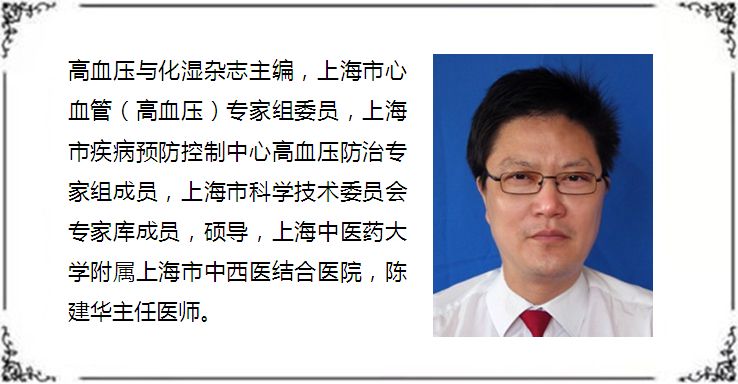
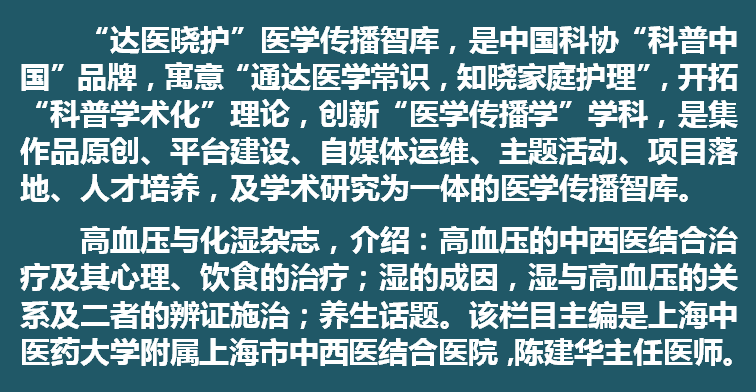
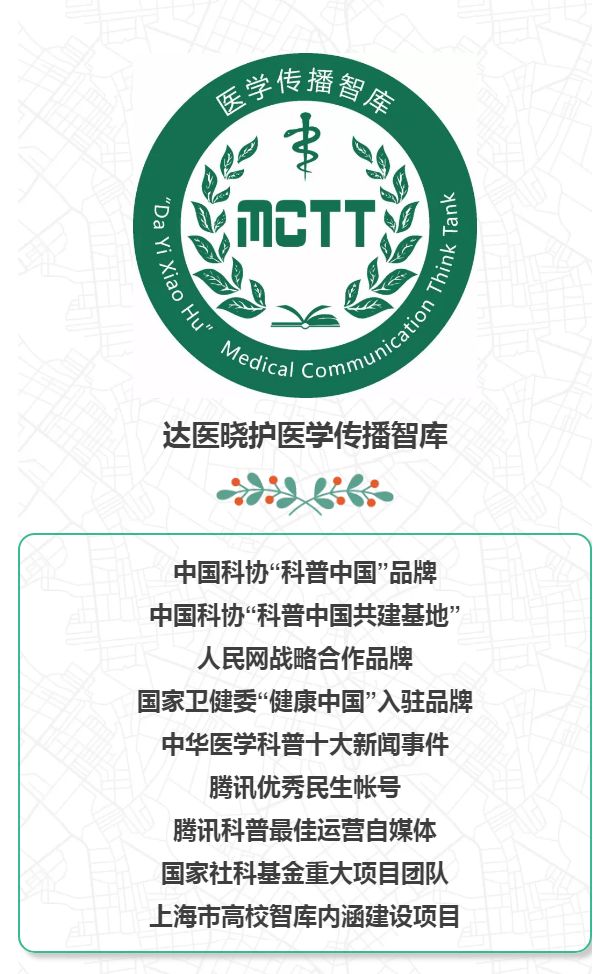

Some images are sourced from the internet; if there are any copyright issues, please inform us for removal.
All names and places are pseudonyms; any resemblance is purely coincidental.
Click “Read the original text” to enter the official website of “Da Yi Xiao Hu”.

